Aboard Tranquilidad, more adventures with N2K (& Raymarine)
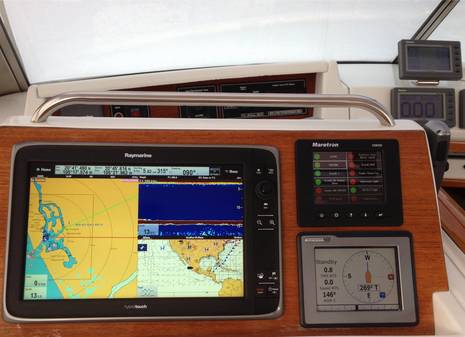
Regular Panbo readers may recall that Jeremy Anwyl wrote a 2011 guest entry about his efforts to bring some stability to his admittedly complex NMEA 2000 network. Back then, he was focused on the backbone, minimizing voltage drops, managing reflections and so forth. Anwyl continues to enjoy using his lovely Beneteau 57 Tranquilidad as an electronics lab, but he's also finding bugs in new places...
Jeremy Anwyl: Since I wrote that entry I have learned that I may have been focused in the wrong area. The backbone is certainly important, but even the best setup won't help if the devices themselves are at fault. I haven't seen this discussed much, but my impression is that many first generation NMEA 2000 devices were not really up to the task of playing nicely with other devices on larger networks. Maretron gear has always been pretty good, Furuno as well, but the Lowrance LMF displays and EP85 storage devices, not so much. A bit better were my Airmar PB200 and Floscan devices. (Generally, the worst that would happen is that these devices would randomly drop off the network.)
My experience with Raymarine devices was particularly frustrating -- especially with the ST70 displays. They would reboot or freeze; not occasionally but all the time. When a display was frozen, the only way to fix the problem was to power down, then re-power the network. It wasn't just the ST70s. The original E-series had all sorts of problems when connected to a NMEA 2000 backbone. The newer widescreen MFDs were better, but they would still reboot repeatedly and drop off the network from time to time. (I also found them to emit a noticeable high pitched whine.)
Firmware upgrades failed to remedy these issues and eventually I realized that hardware issues really could not be fixed -- at least with that generation of hardware. That lead me to the painful conclusion that I needed to upgrade the troublesome hardware. Some readers might question my judgment, but I decided to stick with Raymarine. I had an investment in AIS, SPX30 pilot, radar, Sirius receiver, and depth sounders that -- with the exception of the DSM300g sounder -- were working very well. (The sounder suffered from the common "lost connection" problem.) I have also found there is a good market for used Raymarine equipment on sites like eBay, which takes much of the sting out of buying new hardware.
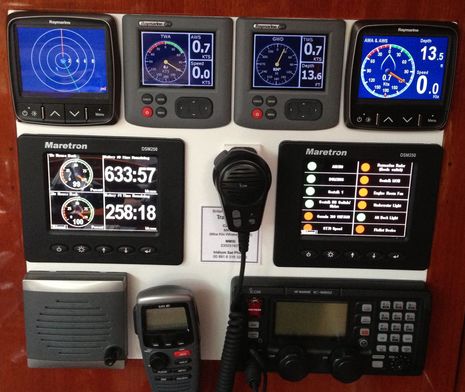
So when Raymarine introduced the i70, I purchased one to test. The good news is that I found the device to be rock solid. I now have swapped out five ST70s for i70 displays and none have ever locked up or rebooted. (I have a few ST70s left that I have running on a small Seatalk bus. They seem quite reliable as Seatalk instruments.)
Next, I had to confront the issues with the E Wides. These have obviously been replaced by the newer e-series MFDs, which like the i-series instruments seem to be from-the-ground-up beneficiaries of the deep R & D pockets of Raymarine's new owner FLIR Systems. I had two wide screen MFDs. One E120W at the helm and an E140W, set as the master, at the cockpit navigation station. (Our Beneteau 57 sailboat is a center cockpit design, but has a hard carbon t-top that turns it into something of a pilot house. We do most of our navigation work in the cockpit with PC based navigation software at the inside navigation station.)
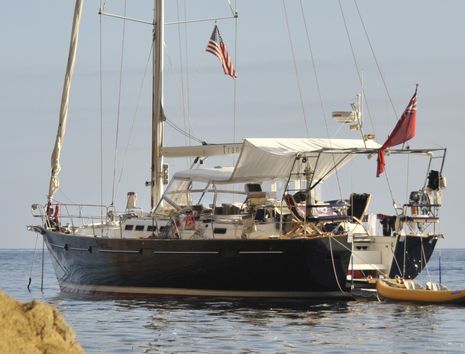
I started by replacing the E120W with the e125. At the time, there was no replacement for the E140W, so the new e125 was set to run in "compatibility" mode with the E140W as the master. (Raymarine has a very ominous looking set of instructions concerning the running of a new e-series with an older E-Wide, but I experienced no problems with this set-up.) The best news is that the new e125, like the i-series instruments, is very stable.
There are a few things I found during the installation that are worth noting. I work in the technology industry and looking at these new devices, I can see that Raymarine has adopted two "best practices." The first is the idea that less is often better. Apple started this trend when they took away a floppy drive on the original iMac, and it didn't stop there. So on the new e-Series, don't expect to find a SeaTalk port. Raymarine also took away one NMEA 0183 port. Neither will be missed on new installs, but if you are upgrading, you may need to get a SeaTalk ng to SeaTalk adapter to get data to your SeaTalk devices. (I have a couple of these running; they can get tripped by complex data, like ground, true and apparent wind when all are on the bus, but generally work OK.)
The second "best practice" Raymarine has adopted is to reduce software features in order to hit a deadline. Generally this is a good idea, but you may find that one of the features that Raymarine chose to eliminate (or delay) was one you were expecting. To be fair, of late, Raymarine has been great about releasing new software. We are already up to version 5.x and each update either adds back old features or in some cases entirely new goodies. (Like the fuel range ring in the last update.)
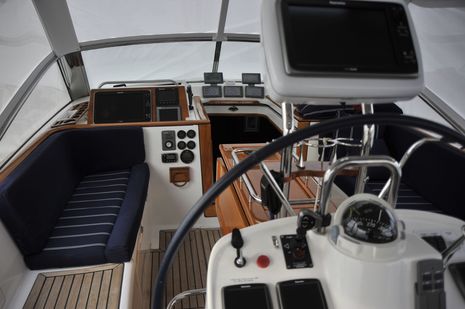
There are a couple other issues I ran into when upgrading. The first is really just an observation: Counter intuitively, the new e125 is actually smaller than the E120W. This means that existing cut outs, pods, etc. will have to be repaired or replaced. (Since I installed my e125, Raymarine has introduced a range of bezels that make upgrading from older C/E-series and C/E Wides easier. I have the e125 installed in a Nav pod above the helm and would have probably still have replaced the pod as the new pod is more compact.) The second is more of a quibble. Emulating Apple's move with their new Lightening port, Raymarine has introduced a new port to replace SeaTalk hs. It is called Raynet and seems to be a good example of a solution looking for a problem. Raynet is still an Ethernet based network and the only change (other than the name) is the physical connector. Of course, my boat already has runs of the older Seatalk hs cables, so I needed an adapter. (I ended up cobbling one together using a Dremel tool.) Since I installed my e125, Raymarine has introduced a complete line of adapter cables. So now if you are planning an upgrade, you just need to factor in the cost of an extra cable.
My biggest issue with Raymarine and the e125 has to do with WiFi. Raymarine has released a few apps for tablets or smartphones that repeat the MFD screen, via WiFi. Cool, huh? The problem is that Raymarine decided to only allow a connection via a unique SSID. This means that if you already have a ship's WiFi network, you will be switching from one WiFi network to another (and back). As an example, one the features that is still missing from the new e-Series is the ability to control Sirius Satellite radio from the MFD. (This is "rumored" to be coming mid-Q1.) The "solution" is to connect satellite radio to your stereo directly instead (and pony up for an extra monthly subscription). I did this with my Fusion 700. Like Raymarine, Fusion also offers cool apps for controlling the stereo.
The problem is that I have NMEA 2000 data available on WiFi via a SeaSmart adapter. And I can control the stereo via the Fusion app. And, of course, I have Internet -- all on the ship's WiFi network. But if I want to see what is happening on my MFD, I have to switch SSIDs. In practice, this is too much trouble and my Raymarine apps just don't get used. (Hint to Raymarine: You need follow the lead of Furuno and make your WiFi more flexible.)
Most recently I received a new e165 MFD. Unlike the e125, this unit fits exactly in the cut-out for the older E140W. (Which I again quickly sold on eBay.) Like the e125, the e165 is a solid piece of hardware. Much faster than the Widescreens, brighter displays and a clean new design. In the case of the e165, the screen is huge.
The e165 seems more stable than the e140, but as it is the system master, I have found a couple wrinkles. The first is that on a recent 36 hour trip -- the first with the e165 -- from Cabo San Lucas to Puerto Vallarta, the unit did reboot once. (This is much better than the E140W that would only go around 3 hours between reboots.)
The second wrinkle is a bit trickier. During this trip I was seeing a "lost GPS" warning and occasionally the boat heading would be wildly different than the actual heading. I traced these problems to the NMEA 0183 input. I have a small NMEA 0183 subsystem with a Garmin 300 VHF, an iCom 802 SSB, a pactor modem, AIS data and a PC with navigation software all connected via an Actisence NDC multiplexer. NMEA 2000 data is bridged to these devices via an Actisence NGW.
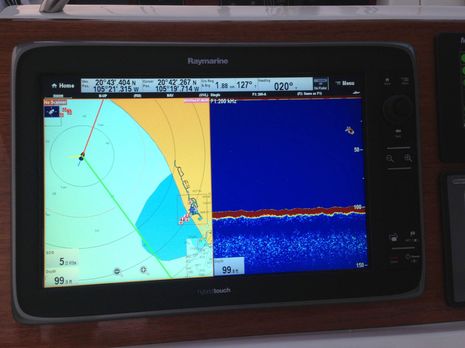
The problem is that I also need to connect the Garmin 300 VHF and the e165 via NMEA 0183 for DSC functionality. Connecting the e165 to the NMEA 0183 output of the NDC looks like it creates a data loop, or some such problem. Raymarine says that when data is available via NMEA 2000, the MFD ignores NMEA 0183 data. This doesn't seem to be entirely accurate. I have been experimenting with filtering data on the NDC, but because it has only one NMEA 4800 baud output, this is limited in value. Short of not connecting the e165 to the NMEA 0183 data stream, it seems the only fix would be an entirely new NDC multiplexer. This would be used exclusively for the e165 and would allow both input and data to be filtered. (Limited to DSC data.).
This points out a couple things: The first is that even today, boaters are still stuck using NMEA 0183 for VHFs and other "legacy" devices. It doesn't look like the equipment manufacturers have fully thought through how all this should work.
The second is that Raymarine still has some work to do with their NMEA port software. It is possible to filter data out, but not data in. (All I need is DSC data.) The e165 also has a feature that allows you to select data sources--which if it worked would seem to offer a solution. The problem is that when I try to select a device, I get a message that there is a conflict and to refer to my Atom manual for more information. (Anyone have an Atom manual they care to send me?) Strangely, even with these errors, when I select the device selection to manual, even without the ability to select a device the NMEA 0183 issues stop. (Apparently, this data source selection is only designed to work with the Raymarine's latest NMEA 2000 devices. Systems with ST70s, SPX pilots, etc. will get the errors messages I experienced.)
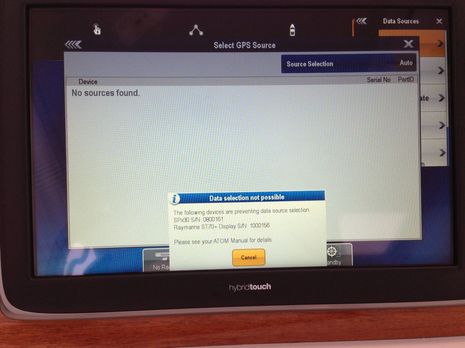
And I should probably note that one previous feature is still missing from the new MFDs is the ability to transfer waypoints and routes via NMEA 0183. This can be important if you are using a PC as a backup navigation system. (It might be possible to transfer via Seatalk, but as I noted, the e165 doesn't have a Seatalk port, so you will need the Seatalk to Seatalk ng converter. And if you want AIS data on the PC, you will need a multiplexer as well!)
I should put all this into perspective. The latest generation of Raymarine equipment is vastly improved. Many boaters will never run into the issues I have. And even for me, the kinds of things I run across are much more manageable than the issues of just a few years ago.
With all the good stuff Raymarine has been releasing over the past year, there are a couple things I would still like to see. The first is a Seatalk ng/NMEA 2000 version of their wireless smart controllers (With a color screen please.) Garmin's new wristwatch controller/display has reset the bar in this area.
The second is a long overdue upgrade to Raytech Navigator. They did release Voyage Planner, but I have found that to be slow, buggy, and it won't work with my chart library. Plus, it is really just for route planning anyway. (Fugawi has released Marine 5, which apparently connects to the new MFDs, but there is no trial version and I have not given it a try.) I am still running Raytech 6.2 at the inside navigation station, getting data via NMEA 0183. It is much better than Voyage Planner, but is looking very old school. A snazzy new version that was connected via WiFi would be great.
Oh yes, don't forget about fixing the limited WiFi on those MFDs...
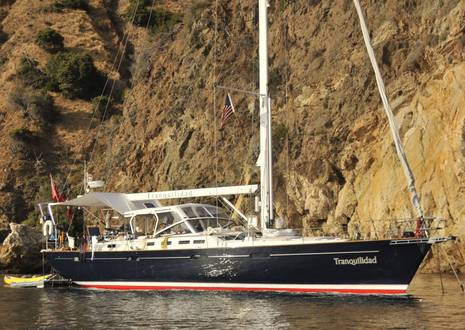
When not cruising or tinkering aboard Tranquilidad, Jeremy Anwyl is Vice Chairman of the automobile information site Edmunds.com.

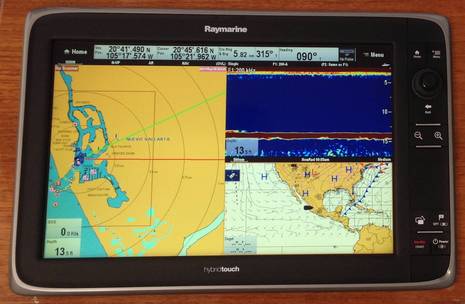
 Share
Share
If I were the owner of FLIR/Raymarine, after reading this and without knowing you personally, I would offer you a position as head of product development. And if you accepted, I would fire my existing head of product development ;-)
On a more technical side: In your old entry, you had described problems with termination of the PB200 at the mast head (there was none) and how you combated that by adding an inline terminator at the mast step below deck.
When I ordered my own PB200 I was extra careful to get a cable with termination as I was afraid this would not be marked on it and I would never know for sure. I then learned that Airmar puts termination into all cables over 6 metres and I found a reassuring piece of yellow shrink tube near the connector stating clearly "this connector has built-in termination". So Airmar seems to have learned from your experience.
But following your example, I still added an inline terminator at the mast step, thinking "the more the better", or, more specifically "one too many is better than one too few".
I turned out that it didn't work with the additional terminator. The PB 200 appeared to not exist at all. Only when I removed the terminator did it work.
In the 2012 season, I had the PB 200 disappear on one occasion (exactly one). At this time, it would not come back on even though I cycled power. But the next morning, it was back and has never failed since. My PB 200 has it's own power tee so I can power it up or down independently. So when I cycled power, the rest of the bus stayed powered up. Overnight I had everything powered down so maybe this is why it came back to life the next morning.